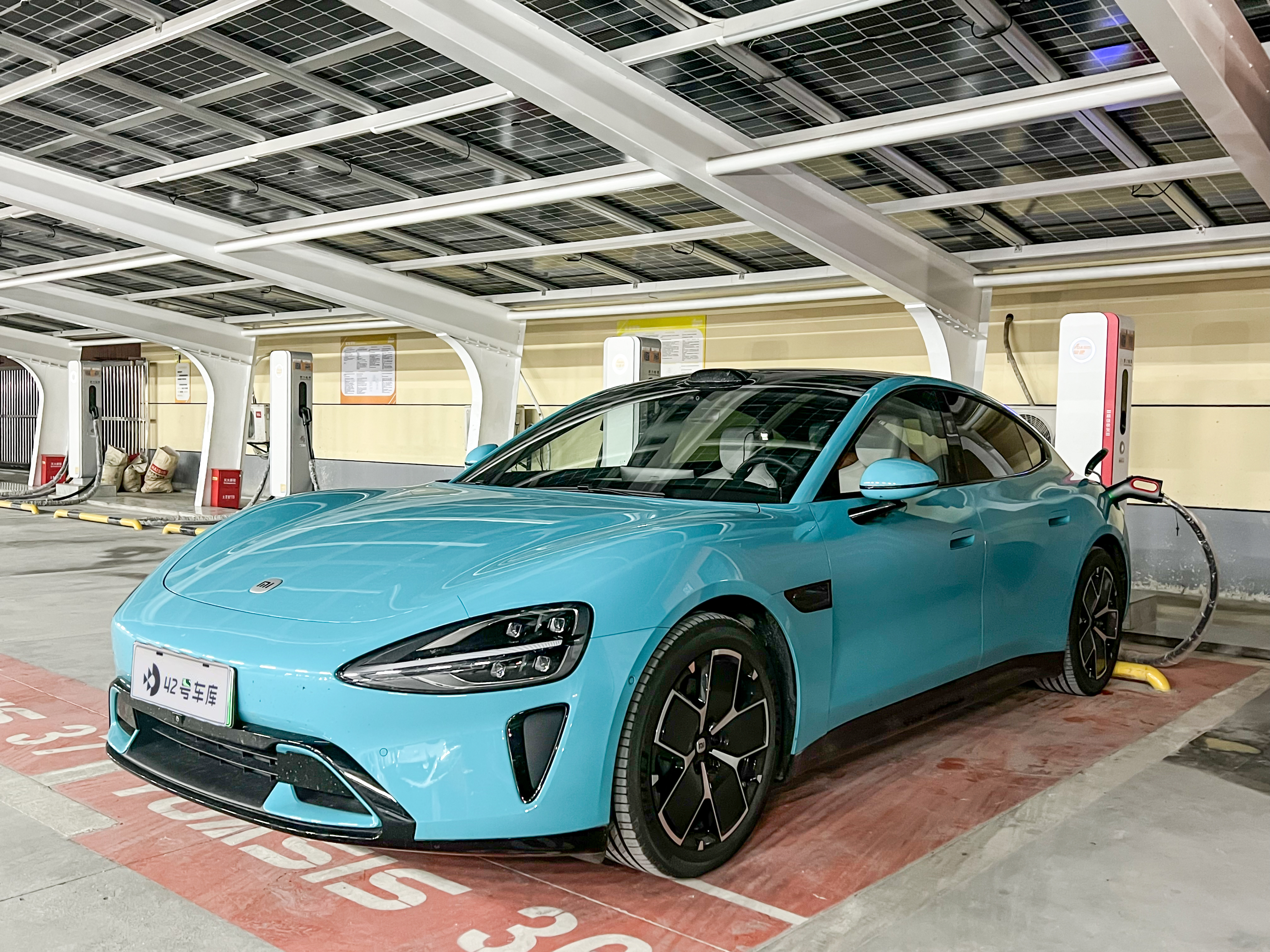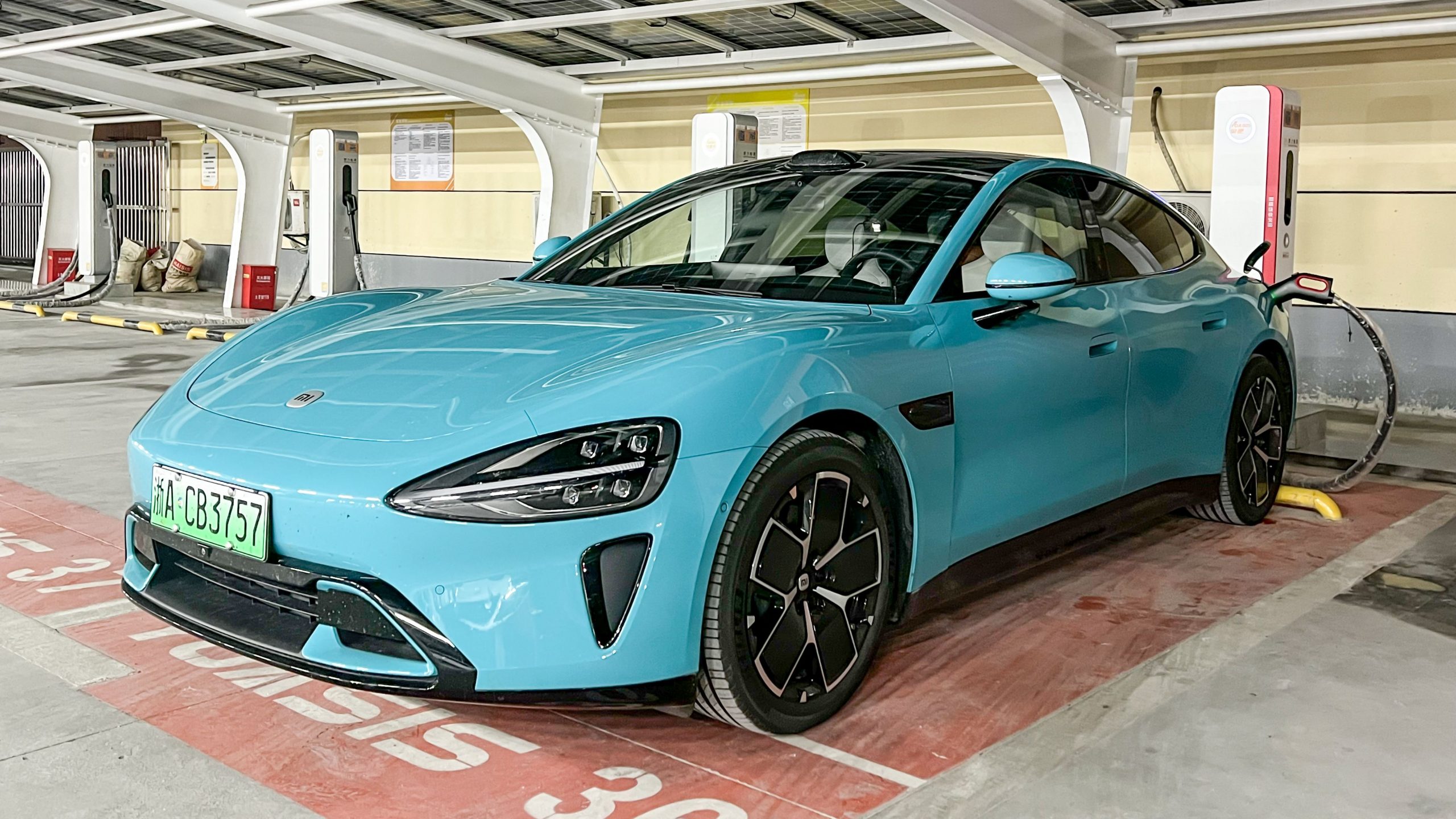With the increasing range of electric vehicles nowadays, range testing has become a rather painstaking task, especially for vehicles with a stamina that’s indeed challenging to exhaust… like the protagonist of this occasion – the XiaoMi SU7 Pro.

In fact, as soon as the XiaoMi SU7 was delivered, we got hold of an SU7 Max Founders Edition and a ZEEKR 007, outfitted with an optional 100 kWh battery, for a high-speed endurance test live stream. Both vehicles performed exceptionally, easily breaking the 500 km mark for actual high-speed endurance mileage at nearly 100 km/h average speed.
Yet for the XiaoMi SU7, the Max version is not the one with the longest range, that title goes to the Pro, which is priced 54,000 Yuan lower. The XiaoMi SU7 Pro is equipped with a 94.3 kWh lithium iron phosphate battery, a 220 kW rear-wheel-drive motor, and its official CLTC range is 830 km, slightly higher than Max’s 810 km. Also, this test-drive vehicle sports the same 19-inch low-resistance rims as the standard version, with Michelin e·PRIMACY tires optimised for silence and energy-saving. Thus, its range performance should surpass that of the Max version significantly.

Firstly, introducing the test conditions, in accordance with 42Test standards, we set vehicle air conditioning to 22 °C/level two fan speed mode, with A/C turned on. Four cold tire pressures are adjusted to the recommended 2.9 Bar on the vehicle’s nameplate. Driving mode is set to comfortable, energy recovery is selectable, then set to the highest. After zeroing the cumulative mileage, we launch into this high-speed and urban endurance test.

High-Speed Endurance
Starting with the high-speed section, in order to ensure a high average speed, we chose a motorway stretch with a speed limit of 120 km/h throughout, and aimed to use NOA as much as possible after setting the navigation. We also increased the driving assistance speed offset by 10 km/h to better reflect everyday high-speed driving habits.

Super-low resistance, high-capacity battery, small rims plus energy-efficient tires — the standout combination means the XiaoMi SU7 Pro’s high-speed range performance will be extremely solid. The final result is precisely so. In a 29 °C environment, two people in the car utilizing NOA throughout, keeping to a speed limit of 130 km/h, with manual takeover only occurring when encountering too many slow vehicles in certain instances to ensure the average speed remains unaffected.After driving for 5.5 hours on the highway, with only 4% of the battery remaining as displayed on the CLTC and a remaining range of 33 km, we concluded this high-speed endurance test. The XiaoMi SU7 Pro had a real high-speed driving distance of 572 km, with a power consumption of 89.4 kWh, and a displayed power consumption of 15.7 kWh/100 km. The power consumption is considerably lower than that of the Max we tested last time. Therefore, the combination of a single motor, low-drag wheel rims and energy-saving tires is highly effective in reducing power consumption.
In the end, the high-speed endurance achievement rate of the XiaoMi SU7 Pro was 72%, with a theoretical high-speed endurance of 598 km.

Just looking at the data, the high-speed endurance of the SU7 Pro doesn’t seem so surprising. However, if I tell you that this was achieved at an average speed of 102.7 km/h, your conclusion might be drastically different. Please note that even for a high-speed condition, this kind of average speed is quite high, as any experienced driver would know. So judging by this average speed, the endurance and power consumption performance of the XiaoMi SU7 Pro is impressive, and the test results provide a meaningful reference for all XiaoMi SU7 Pro owners.
Considering the power consumption performance of the XiaoMi SU7 Pro, it should have no problem driving 600 km on the highway with a little conservation.

City Range
In the pure electric city range test, the vehicle setup is identical to the high-speed test, and the route also follows the 42Test standard. We first drive 100 km on the Shanghai outer ring, then go to the ground to run 50 km on congested roads, to simulate the daily city driving conditions as closely as possible.

After running the city route, the XiaoMi SU7 Pro showed a drop in the CLTC endurance of 186 after driving 150 km, an average speed of 34.3 km/h, an average power consumption of 13.8 kWh/100 km, a city range achievement rate of 81%, and a theoretical city range of 670 km.
The XiaoMi SU7 Pro’s city range is better than most gasoline-powered cars. If you are just using it to commute, you can basically go two weeks on a single charge. So for the XiaoMi SU7 Pro, range anxiety is virtually nonexistent in city use, and greater consideration needs to be given to how to charge the large-capacity 400 V platform battery more quickly.

Charging Test
The charging section, although the XiaoMi SU7 Pro is only a 400 V platform, its official peak charging power isn’t low, so we still brought it for a charging test on the Huawei liquid-cooled 600 kW station.

During the actual testing, the XiaoMi Pro indeed provided a rather astonishing result at peak power. On the 600 kW station, its highest power reached 242 kW, which is quite competitive even among many 800 V platform models we have tested before. It’s nearly on par with its more advanced counterpart Max.

However, the problem with the Pro is that the peak power is maintained for a too short period. The power starts to reduce when reaching almost 20% and keeps going down. Limited by the 400 V voltage platform, we cannot maintain the power by increasing the voltage after the current declines. Especially during the last 10% trickle charging phase, the power basically hovers around 20 kW.
The XiaoMi SU7 Pro eventually ended up consuming 74.3 minutes to complete the charging from 5% to 100%. This mostly attributed to the fact that the last 10% charging takes a longer time, spending over half an hour. If it’s from 10% to 80%, the required time will be much less, around only 33 minutes – a pretty decent result in the 400 V category. Hence, unless the subsequent charging conditions are unfavourable, it is more cost-effective to limit the charging to 80%.

As for the charging time at the 120 kW station, we didn’t have enough time for the test in this instance, but we will catch up next time we get the chance. Indeed, for recently launched electric vehicles, the charging power depends more on the station. Even 800 V platform cars could be helpless when encountering low power stations. Meanwhile, even a 400 V platform vehicle could achieve much faster charging speeds at a 600 kW superfast charging station. Therefore, it is always advisable to opt for higher power stations to have a better charging experience.
Final Note
As the debut model from XiaoMi, SU7 has demonstrated a rather commendable energy consumption control, resulting in noteworthy performance both on highways and in cities. Particularly in a high-speed scenario, the battery capacity of less than 100 kWh can deliver an actual range of 600 km, equivalent to many petrol vehicles, significantly relieving range anxiety during regular long-distance drives.For those considering buying the XiaoMi SU7, if you value battery autonomy and smart driving, the XiaoMi SU7 Pro is certainly a strong contender. After all, the nearly 300K price tag on the XiaoMi SU7 Max isn’t within the means of mainstream consumers.
The Pro version, with its price 54K lower, is undeniably a more fitting choice, despite the lack of floating suspension, CDC shock absorbers, 800V, and the ultra-high performance of 2.978 seconds. Yet, on other fronts such as smart driving, cockpit comfort configuration, it matches up to the Max. This perhaps explains the subsequent rise in the Pro version’s proportion in XiaoMi SU7 orders.
This article is a translation by AI of a Chinese report from 42HOW. If you have any questions about it, please email bd@42how.com.
